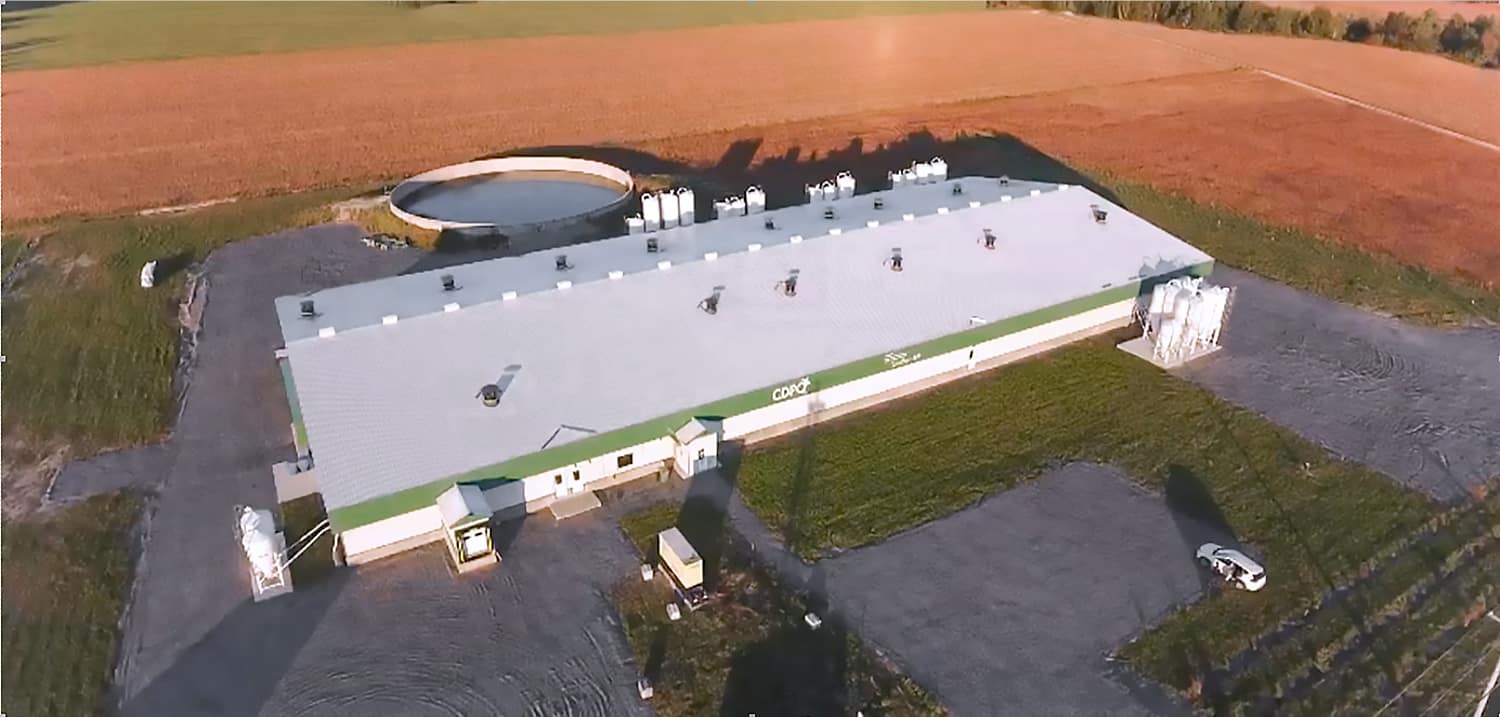
Patrick Gagnon, PhD, is Manager, Data Analysis and Valorization, Centre de développement du porc du Québec (Quebec Pork Development Centre) (CDPQ). As such, he leads the CAAIN-supported project, Application of Artificial Intelligence (AI) Technologies for Improved Welfare and Productivity in Commercial Sow Barns. His route to this career was unusual, as we discovered when we asked what led him to his current role.
“I grew up near Baie Comeau on Quebec’s North Shore, a region known for forestry and hydro electricity, as well as hunting and fishing. But not agriculture. I played sports, rather than working on a family farm, and had a keen interest in mathematics. Math as it pertains to natural resources was what interested me initially, and I did my bachelor’s and master’s degrees in statistical analysis at Université Laval.
“The courses focused on theoretical analysis, but I always had in mind to choose a practical career path— in either forestry or the energy sector. However, for my doctorate, rather than do a PhD in statistics, I decided to focus on hydrology and the environment at the Institut national de la recherche scientifique (National Institute of Scientific Research) (INRS), part of the Université du Québec umbrella.” He pauses to consider his next words. “What’s interesting about the INRS is that it’s strictly for graduate students engaged in research. My work and thesis focused on stochastic modeling of precipitation and quantitative hydrological modeling[1].”
“I ended up working for four years with Agriculture and Agri-Food Canada (AAFC) on water quality modeling with a focus on pesticide concentrations, which served as my first exposure to the ag sector. In 2016, at the end of my AAFC post-doc I applied for an opportunity at the CDPQ. It was a perfect fit with my transferable skills in statistical analysis, if not my experience, and the change of streams made it very interesting.”
Patrick goes on to say that his work is heavily dependent on artificial intelligence, echoing what CAAIN has heard from many of our project partners.
CDPQ supports technology research when approached with an interesting proof of concept. But the organisation wanted to go beyond that stage and get involved in agtech that had real commercial potential. In the case of the CAAIN collaboration, the Centre saw an opportunity to advance Quebec-based technology that could improve outcomes for pork producers while reducing labour requirements, and using AI and computer vision to advance an operator’s ability to monitor a range of factors relevant to profitable, productive pork production, including:
In addition to the technological capabilities, there’s the issue of durability. A little-known fact about pork production is that the equipment in a sow barn must be robust and capable of withstanding significant physical abuse. For obvious reasons, it requires frequent washing; but beyond that, it is constantly being knocked about by large animals. In other words, a project of this kind must evaluate a range of factors if it is to contribute meaningfully to industry improvement.
Rather than reinventing the wheel, the CDPQ likes to evaluate existing tech to see if it can be adapted or improved upon. Creating a software patch that adds desirable functions is more economical and less time-consuming than developing entirely new technology from scratch. Thus, CAAIN is funding CDPQ’s review of existing, highly innovative technology to determine if modifying applications or developing software patches can enhance data integrity and validation, particularly with respect to optimal precision sow feeding. CAAIN’s $191,487 investment in this project, though relatively modest, nevertheless provides important support, allowing the CDPQ to derisk the adoption and adaptation of an existing suite of valuable technologies that are expected to provide digital improvements to pork production.
[1] Stochastic precipitation models are statistical tools that simulate the natural variability and stochastic behaviour of rainfall. They are used to generate realistic, random sequences of precipitation events.
Centre de développement du porc du Québec, Lévis, QC
Canadian Centre for Swine Improvement Inc., Ottawa, ON
Université Laval, Québec, QC
Ro-main, Saint-Lambert-de-Lauzon, QC
Jyga Technologies, Saint-Lambert-de-Lauzon, QC
Pig Improvement Company, Nantwich, UK
Fast Genetics (AcuFast), Saskatoon, SK
Canadian Pork Council, Ottawa, ON
The objective of the proposed project is to apply AI to improve resilience and sustainability of the Canadian sow barns. To this end, the project partners will test, validate, and demonstrate AI technologies in research facilities, and will collaborate with industry partners, including developers, dealers, and users, to accelerate and facilitate the adoption of precision livestock farming (PLF) in sow barns across Canada.
CAAIN Contribution
$191,487
Total Project Value
$635,117
Patrick Gagnon, PhD
Manager, Data Analysis and Validation
Centre de développement du porc du Québec
pgagnon@cdpq.ca